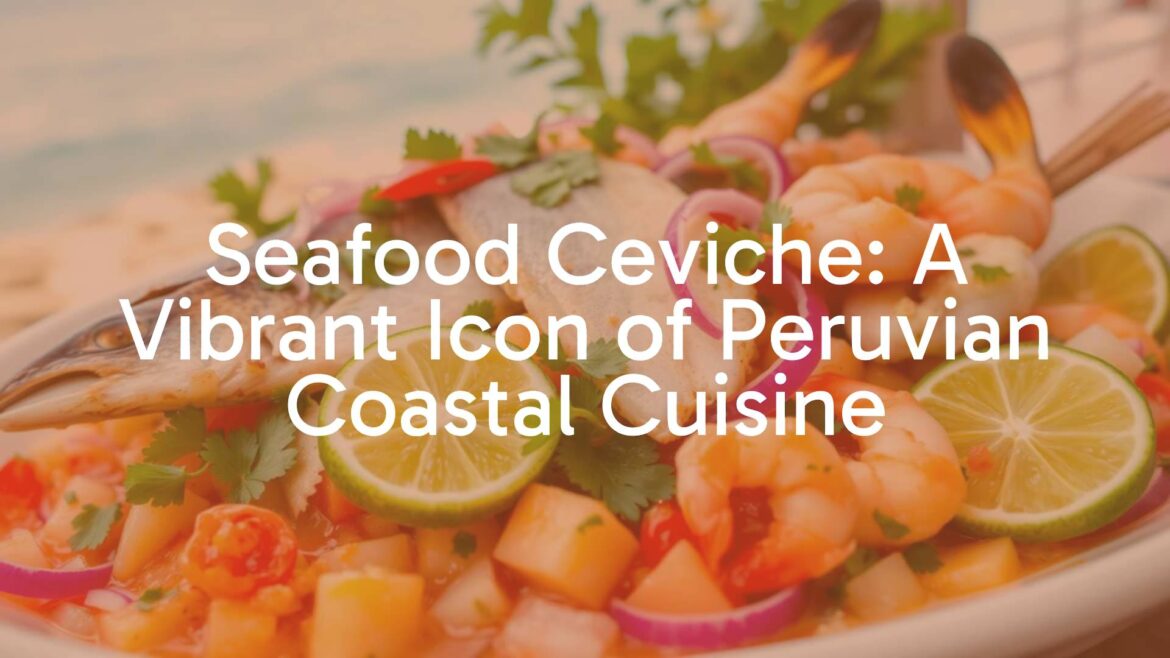Discovering Peruvian Seafood Ceviche
Few dishes capture the spirit of Peru’s coastal heritage as vividly as seafood ceviche. Renowned for its refreshing zest, colorful presentation, and bold flavors, this iconic dish has become a cornerstone not just of Peruvian gastronomy, but of the nation’s collective identity. Seafood ceviche, featuring a medley of ocean delights cured in citrus, is widely celebrated both at home and abroad.
What Sets Seafood Ceviche Apart?
At its core, Peruvian seafood ceviche distinguishes itself by curing raw fish or a mixture of seafood — such as shrimp, octopus, squid, and scallops — in freshly squeezed lime juice. The acidic marinade gently “cooks” the seafood, preserving its delicate texture. Key components that define the dish include the sharp aroma of cilantro, the spicy kick of Peruvian ají peppers (such as ají limo or rocoto), and the crisp simplicity of sliced red onions. The flavor profile harmoniously balances tart citrus, briny seafood, gentle heat, and herbal freshness. Visually, it is a feast of colors — the pale seafood, vivid red pepper, purple onions, and green herbs create an inviting plate.
Origins and Evolution
Ceviche’s roots in Peru reach back centuries, with origins likely stemming from Pre-Columbian times when the Moche civilization marinated fish with fermented fruit juices. The arrival of Spanish conquistadors brought citrus fruits, notably limes, which today are indispensable to the recipe. Over time, the method and ingredients have evolved, yet seafood ceviche remains anchored in traditional practices, paying homage to both indigenous and colonial influences.
Cultural Importance
More than a popular starter or midday meal, seafood ceviche holds a special place in Peruvian culture. It is often enjoyed during social gatherings, family celebrations, and national holidays. The dish symbolizes Peru’s rich marine bounty and its people’s creativity in blending indigenous and international culinary traditions. In 2008, Peru officially declared June 28 as “Día Nacional del Ceviche” (National Ceviche Day) in recognition of its central role in the country’s food scene.
Ingredients That Capture the Essence of Peru
Seafood ceviche is a showcase for Peruvian ingredients, notably the use of ají peppers, which contribute distinctive heat and aroma. The type and freshness of seafood, often straight from the Pacific, mean the dish directly connects diners to the ocean. Peruvian limes (limón sutil), smaller and more acidic than their international cousins, are prized for their intense flavor. Complementary garnishes — such as cancha (toasted corn), sweet potato slices, and choclo (giant Peruvian corn) — enhance both flavor and visual appeal, offering textural contrast and a nod to local agriculture.
Serving Traditions and Regional Variations
Seafood ceviche is traditionally prepared and consumed fresh, often served in shallow dishes or bowls. On the coast, the focus is on the purity of local seafood and the invigorating acidity of the marinade. In other regions, additional components like cooked seafood or special local herbs might be included. Regardless of location, it is customary to serve ceviche with the classic garnish of sweet potato and corn, which balance the acidity and spice of the dish.
A Culinary Emblem of Peru
Seafood ceviche stands as a vibrant symbol of Peruvian identity — a harmonious blend of history, geography, and culture on a single plate. Its tantalizing freshness and complexity continue to captivate the palates of locals and visitors alike, solidifying its place as one of Peru’s most cherished and celebrated culinary treasures.


